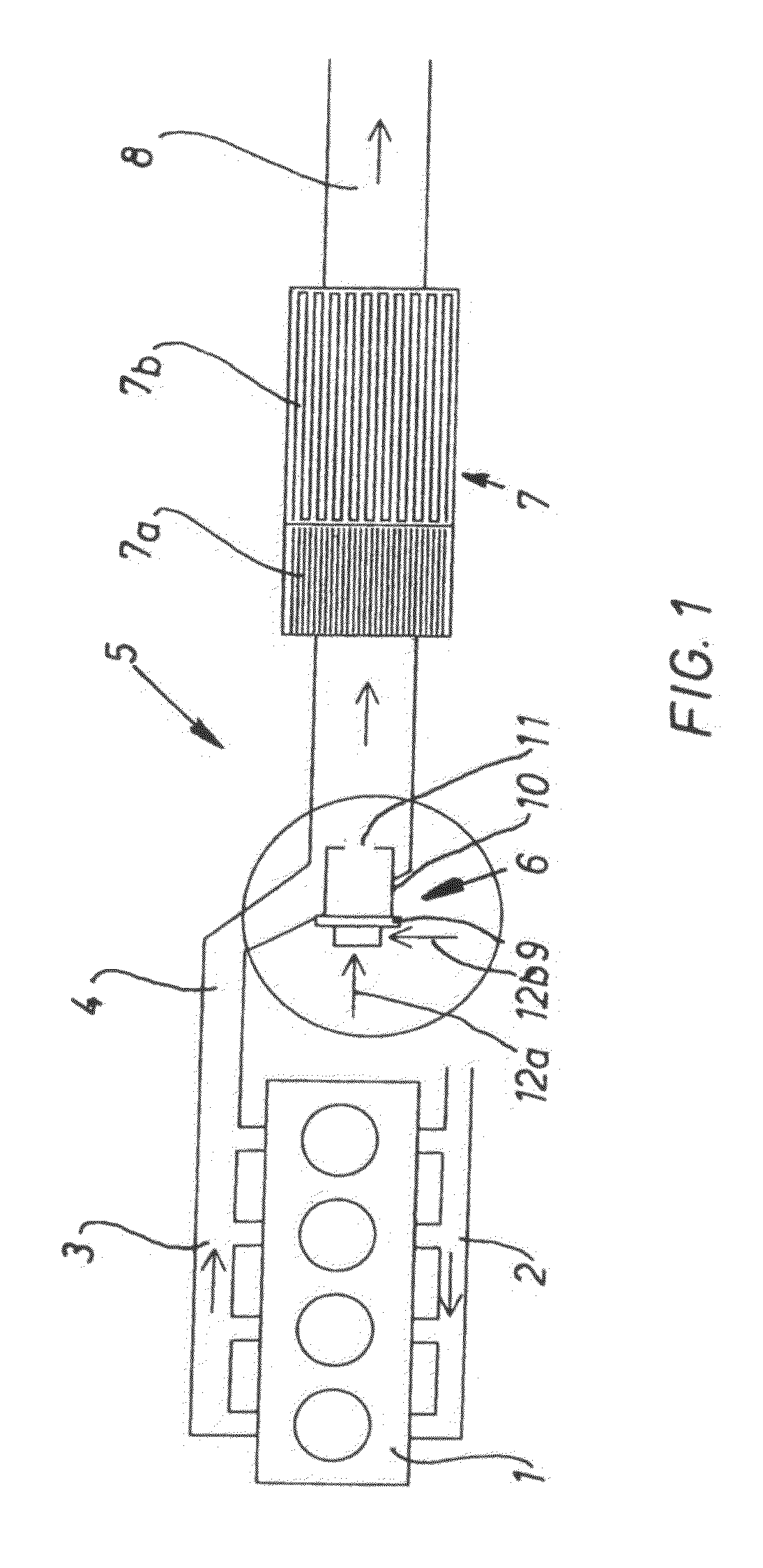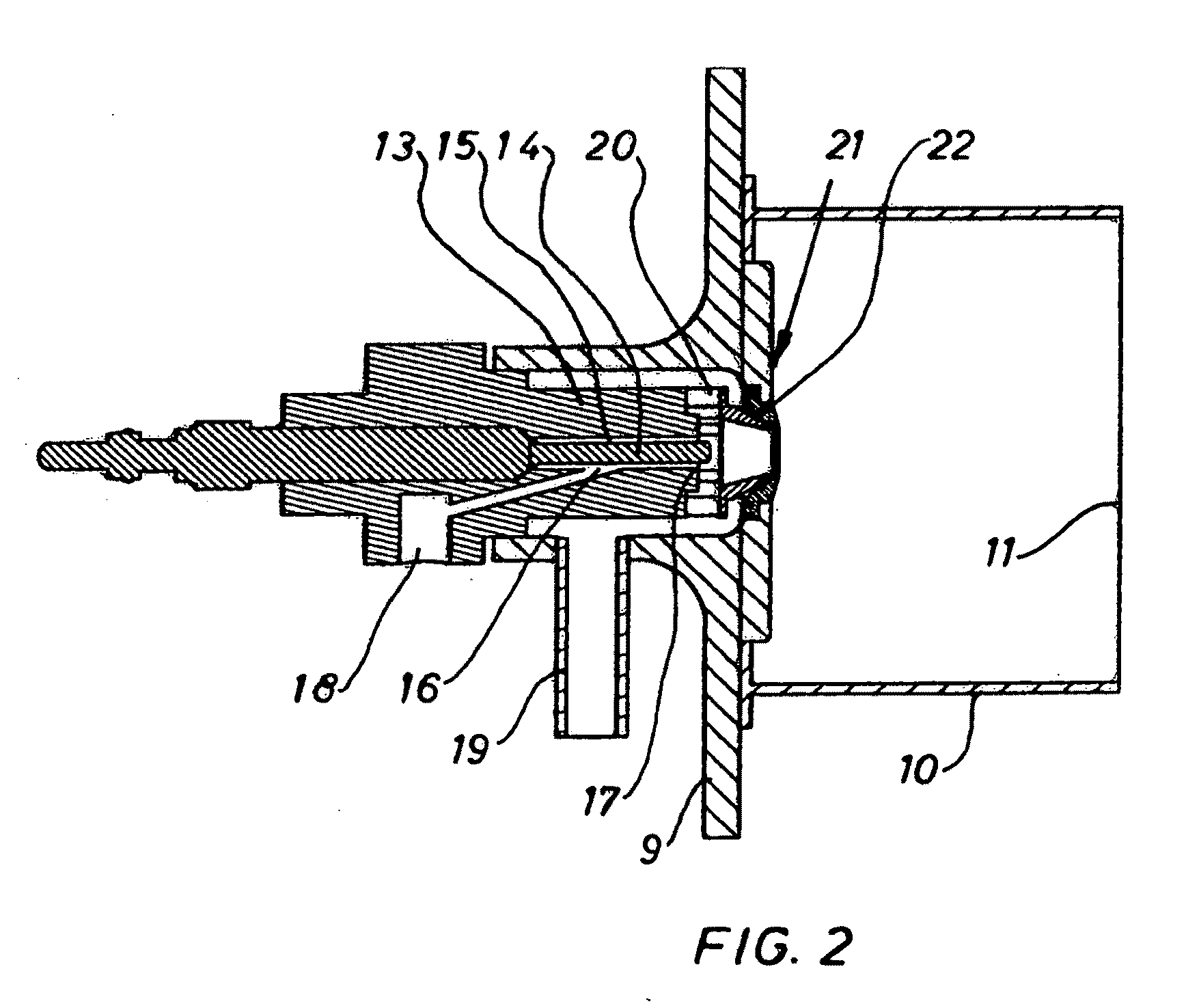Exhaust-gas after-treatment system for an auto-ignition internal combustion engine
an exhaust gas aftertreatment and internal combustion engine technology, applied in exhaust treatment, combustion process, lighting and heating apparatus, etc., can solve the problems of unstable system in terms of burning properties, no longer atomizing the emerging fuel jet, and easy to be contaminated with contaminated gas, etc., to achieve reliable burning, compact structure, and less energy to operate
- Summary
- Abstract
- Description
- Claims
- Application Information
AI Technical Summary
Benefits of technology
Problems solved by technology
Method used
Image
Examples
Embodiment Construction
[0022]An internal combustion engine 1 in the embodiment shown is a 4-cylinder auto-ignition internal combustion engine 1 that can be equipped with a common-rail injection system, with exhaust gas turbocharging and with an exhaust gas return, and which, of course, can have any other desired number of cylinders. In the embodiment shown, combustion air is fed to the internal combustion engine 1 via a fresh gas line system 2, while the fuel is injected directly into the individual cylinder combustion chambers via the fuel injection system. The exhaust gas is discharged into an exhaust gas collector 3, from where it is conveyed to an exhaust-gas after-treatment system 5 via an exhaust-gas line 4.
[0023]The exhaust-gas after-treatment system 5 has a burner 6 and a catalytic converter and / or a particle filter 7. The embodiment shown has a catalytic converter 7a and a particle filter 7b. Fundamentally, all devices and device combinations known to be suitable for exhaust-gas after-treatment c...
PUM
 Login to View More
Login to View More Abstract
Description
Claims
Application Information
 Login to View More
Login to View More - R&D
- Intellectual Property
- Life Sciences
- Materials
- Tech Scout
- Unparalleled Data Quality
- Higher Quality Content
- 60% Fewer Hallucinations
Browse by: Latest US Patents, China's latest patents, Technical Efficacy Thesaurus, Application Domain, Technology Topic, Popular Technical Reports.
© 2025 PatSnap. All rights reserved.Legal|Privacy policy|Modern Slavery Act Transparency Statement|Sitemap|About US| Contact US: help@patsnap.com



